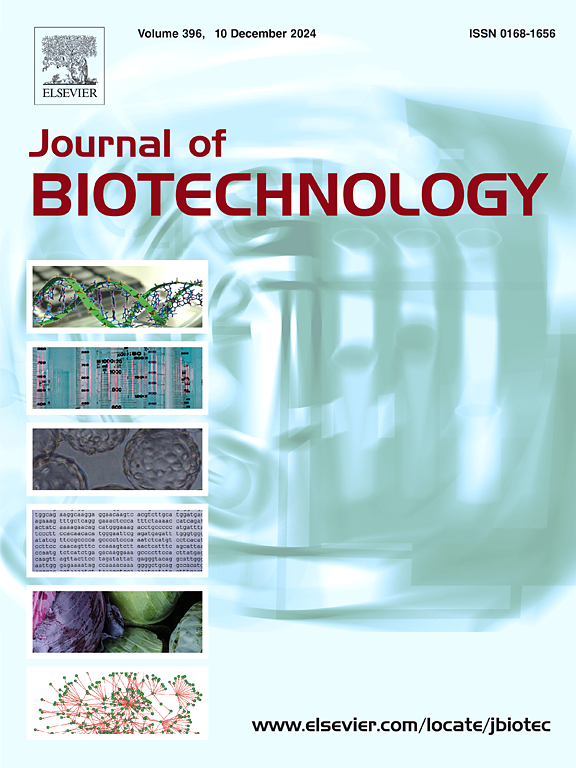Optimizing sustainable production of high-quality microalgae-derived extracellular vesicles through batch-refeed perfusion cultivation
IF 3.9
2区 生物学
Q2 BIOTECHNOLOGY & APPLIED MICROBIOLOGY
引用次数: 0
Abstract
Extracellular vesicles (EVs) are lipid-based nanoparticles with strong potential as therapeutic nanocarriers, but their clinical use is limited by production and cost challenges, especially from human cells. Microalgae-derived EVs (i.e., nanoalgosomes) offer a sustainable and scalable alternative. In this study, we optimized nanoalgosome production by implementing batch-refeed systems that simulate perfusion conditions to improve microalgal viability by maintaining nutrient levels and reducing toxic metabolites. Compared to standard batch cultures, the batch-refeed strategy yielded ten-fold fewer particles but achieved 1.4-fold higher total EV protein yield, likely reflecting a reduction in non-EV co-isolates in favor of bona fide EVs. This is supported by the results of EV-associated luminal esterase activity and by the increase in membrane-enclosed EVs — detected by fluorescent nanoparticle tracking analysis — in batch-refeed–derived nanoalgosomes compared to standard batch cultures, which suggests that the batch-refeed strategy enhances their functional integrity, possibly by preserving vesicle membrane stability and reducing non-vesicular co-isolates. Furthermore, the batch-refeed strategy achieved a three-fold increase in space-time yield (STY) over conventional batch systems. Nanoalgosomes retained key functional properties post-harvest. In vitro assays confirmed that nanoalgosomes derived from both cultivation methods exhibited similar cytoprotective effects, reducing oxidative stress-induced damage in normal mammary epithelial 1–7 HB2 cells and in MDA-MB-231 breast cancer cells. These findings support the use of microalgae-based perfusion-inspired systems as a green, cost-effective and scalable strategy for producing high-quality EVs for biomedical applications.
通过分批补料灌注培养优化优质微藻来源的细胞外囊泡的可持续生产。
细胞外囊泡(EVs)是一种基于脂质的纳米颗粒,作为治疗性纳米载体具有很强的潜力,但其临床应用受到生产和成本挑战的限制,特别是来自人类细胞。微藻衍生的电动汽车(即纳米藻体)提供了一种可持续和可扩展的替代方案。在这项研究中,我们通过实施模拟灌注条件的分批进料系统来优化纳米藻体的生产,通过维持营养水平和减少有毒代谢物来提高微藻的生存能力。与标准批量培养相比,批量再投料策略产生的颗粒减少了10倍,但EV总蛋白产量提高了1.4倍,这可能反映了非EV共分离物的减少,而有利于真正的EV。与标准批量培养相比,分批再喂衍生的纳米糖体中ev相关的luminal酯酶活性和膜封闭ev的增加(通过荧光纳米颗粒跟踪分析检测)的结果支持了这一点,这表明分批再喂策略增强了它们的功能完整性,可能是通过保持囊泡膜稳定性和减少非囊泡共分离物。此外,与传统的批量系统相比,批量再馈送策略实现了三倍的时空产率(STY)增加。纳米糖体在收获后保留了关键的功能特性。体外实验证实,两种培养方法获得的纳米糖体具有相似的细胞保护作用,可以减少氧化应激诱导的正常乳腺上皮细胞1-7 HB2细胞和MDA-MB-231乳腺癌细胞的损伤。这些发现支持将基于微藻的灌注激励系统作为一种绿色、经济、可扩展的策略,用于生产用于生物医学应用的高质量电动汽车。
本文章由计算机程序翻译,如有差异,请以英文原文为准。
求助全文
约1分钟内获得全文
求助全文
来源期刊

Journal of biotechnology
工程技术-生物工程与应用微生物
CiteScore
8.90
自引率
2.40%
发文量
190
审稿时长
45 days
期刊介绍:
The Journal of Biotechnology has an open access mirror journal, the Journal of Biotechnology: X, sharing the same aims and scope, editorial team, submission system and rigorous peer review.
The Journal provides a medium for the rapid publication of both full-length articles and short communications on novel and innovative aspects of biotechnology. The Journal will accept papers ranging from genetic or molecular biological positions to those covering biochemical, chemical or bioprocess engineering aspects as well as computer application of new software concepts, provided that in each case the material is directly relevant to biotechnological systems. Papers presenting information of a multidisciplinary nature that would not be suitable for publication in a journal devoted to a single discipline, are particularly welcome.
 求助内容:
求助内容: 应助结果提醒方式:
应助结果提醒方式:


